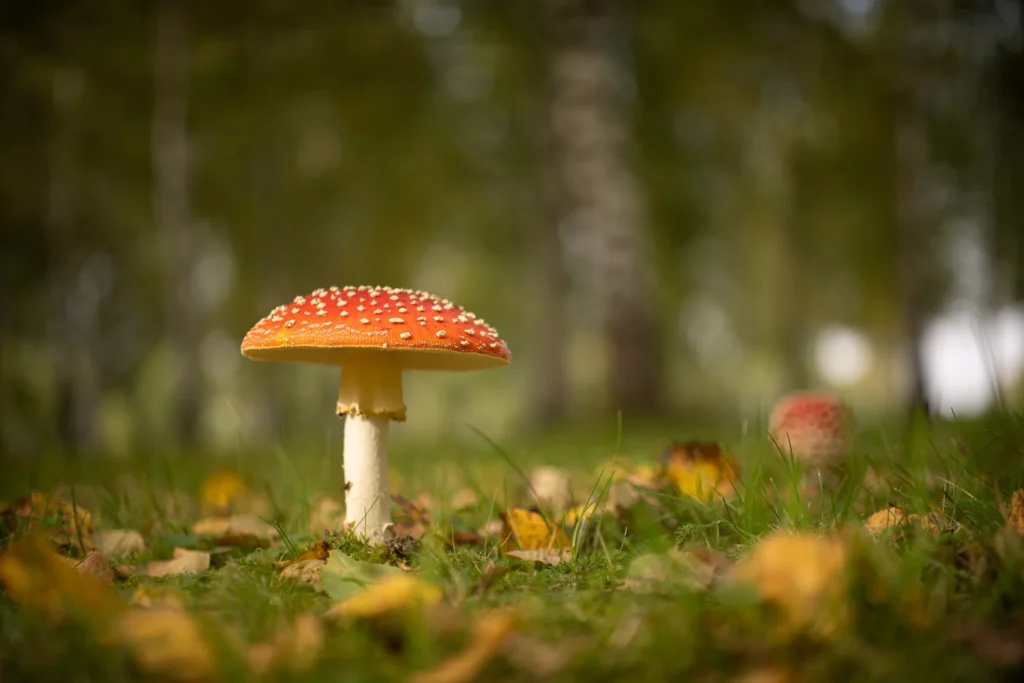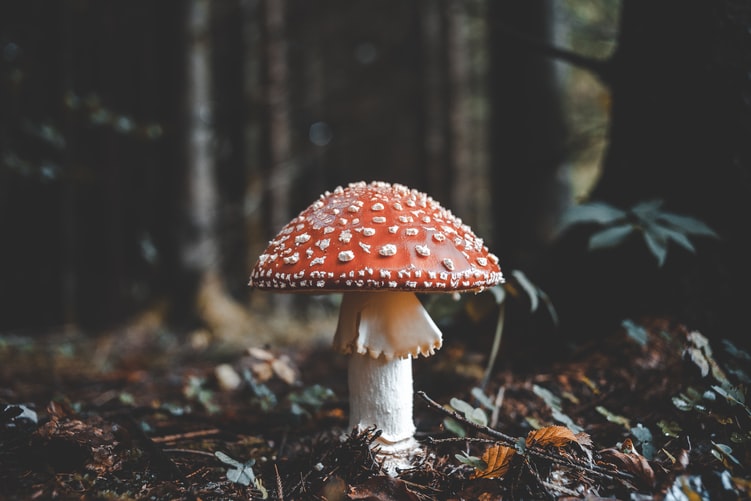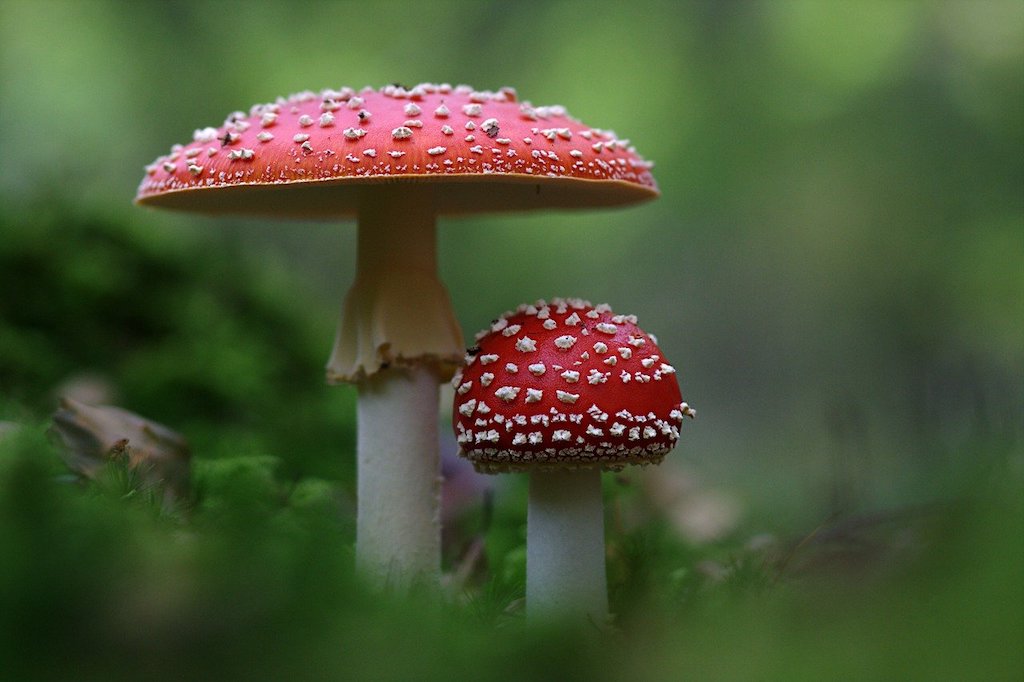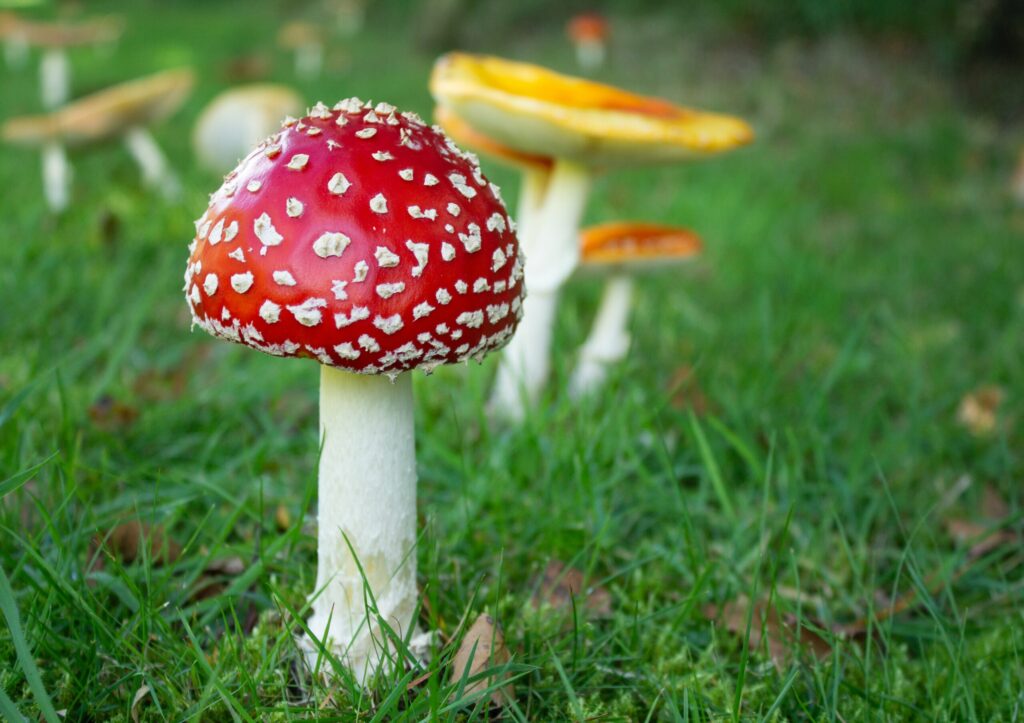History of Amanita Muscaria
- Al Nicola
- June 3, 2023
- 9:46 am

Amanita Muscaria, commonly known as the fly agaric, is a fascinating mushroom with a rich historical and cultural background. Throughout the centuries, this distinctive fungus has captured the imagination of people worldwide, making appearances in folklore, spiritual practices, and even modern recreational subcultures. Let’s dive deep into the history of this astounding mushroom.
Historical Significance of Amanita Muscaria
The Amanita muscaria mushroom holds a rich heritage of religious ceremonial use, notably in Asia. Throughout more than 4,000 years, it played a pivotal role as a key ingredient in a sacred and mind-altering ritual beverage known as ‘soma’ in India and Iran. Additionally, Siberian shamans would bestow it as a gift during the late December festivities.
Amanita Muscaria has also made its mark in European folklore and fairy tales. Its striking appearance and psychoactive properties have led to its association with magical and mythical creatures. The red and white colors of the mushroom have often been linked to Santa Claus, with theories suggesting that the iconic figure may have originated from ancient rituals involving Amanita Muscaria.
This distinct toadstool has made appearances in numerous fairy tales and holds significance in the iconic tale of Alice in Wonderland, where she encounters and consumes the Fly agaric mushroom.

Amanita Muscaria in Siberian Culture
The Amanita muscaria mushroom held great significance in the pre-Christian religious practices of Siberian indigenous people. Its role as an entheogen was well-known and widespread throughout the Russian Far East and Western Siberia, although its usage varied across the region. In the western territories, only practicing shamans or shamanic figures were permitted to partake in its use. The psychoactive properties of the Amanita muscaria enabled them to enter trance-like states that were traditionally achieved through dance and drumming.
Conversely, in eastern Siberia, the Amanita muscaria was used by individuals beyond religious rituals and was also consumed recreationally. However, only the shaman had the privilege of directly ingesting the mushroom, while others had to drink the shaman’s urine after consumption. This may sound peculiar, but it served a purpose. The shaman acted as a filter, as their urine still contained the psychoactive components of the Amanita muscaria while reducing some of the negative side effects such as twitching or stomach discomfort. Surprisingly, the psychoactive properties of the urine may have been even more potent than the mushroom itself, so being on the receiving end was not necessarily a disadvantage.

Amanita Muscaria in Celtic Culture
It is believed that the Celtic Druids utilized the Amanita muscaria mushroom. Despite being aware of its toxic nature, the druids would carefully prepare the mushroom for consumption, seeking the hallucinogenic effects it could induce. They held the belief that this ancient organism contained profound wisdom and that by ingesting it and experiencing its visions and hallucinations, one could gain access to this ancient knowledge and establish a direct connection with the universe. Moreover, the Amanita muscaria was believed to grant visions of faeries and leprechauns, spiritual beings deeply intertwined with the folklore and history of Ireland.

Amanita Muscaria in Aryan Civilization
The ancient Aryan civilization of present-day India possessed a substance called Soma, which is most likely created from Amanita muscaria. The Aryans, who existed approximately 3,500 years ago, embraced a polytheistic religion like many other ancient societies. Among their deities, Soma held a distinct position as not just a Hindu God, but also a plant or a ceremonial drink.
Scant historical artifacts remain from the Aryan civilization, except for over 1,000 hymns that were passed down through generations solely via oral traditions and memory. Eventually, Western explorers transcribed these hymns, although their precise meaning remains somewhat elusive. Priests consumed Soma during religious ceremonies. Initially, it was mixed with water, honey, or barley, and imbibed by the priests, who would enter states of intoxication.
Amanita Muscaria and Vikings
Legend has it that fearsome Viking warriors, known as “berserkers,” would consume the Amanita muscaria mushroom before going into battle, harnessing its effects to enter a trance-like state of furious combat. There is one particular tale of a Viking berserker singlehandedly defeating dozens of English soldiers.
According to the tale, during the Battle of Stamford Bridge, a lone Viking held off an entire army to buy time for his fellow Norsemen. Though outnumbered, the Viking berserker refused to surrender, he fought with such fury that the English soldiers were hesitant to approach. Only after forty enemies fell did the English swim beneath the bridge and defeat the berserker by spearing him from below.
Amanita Inspired the Tale of Santa Claus
The origins of Santa Claus, with his red and white attire and jolly demeanor, have a curious connection to the Amanita muscaria mushroom. The story of Santa Claus is a blend of European influences and folk characters, notably inspired by Saint Nicholas, a generous archbishop who dedicated his life to helping the poor. However, the association with the magical mushroom is intriguing.
According to one tale, the indigenous Sami people of Lapland awaited visits from shamans on the Winter Solstice. These shamans used the Amanita muscaria mushroom, a revered red-and-white toadstool, in their healing ceremonies. The shamans, dressed as the mushrooms, arrived at houses in large red-and-white suits. Snowed-in families compelled the healers to enter through chimneys, acting as conduits between the spirit and the human world. They brought gifts of introspection to solve the family’s problems and were treated with food. Departing on reindeer-drawn sleds, they left a lasting impression.
Today, Santa Claus dons the same vibrant red and white costume as the Amanita muscaria. He resides in the North, carries a bag of gifts, flies on a sleigh pulled by magical reindeer, and enters homes through chimneys. This intriguing connection between Santa Claus and the Amanita muscaria adds an intriguing layer to the beloved figure’s history.
Final Word
The history of Amanita Muscaria, the fly agaric mushroom, is a captivating journey through time and diverse cultures. Its striking appearance, psychoactive properties, and mystical allure have left an indelible mark on human civilization. From ancient religious ceremonies to folklore and fairy tales, this enigmatic fungus has played a significant role in shaping our beliefs and traditions. The history of Amanita Muscaria is not merely a narrative of a mushroom but a reflection of our fascination with altered states of consciousness, our quest for spiritual transcendence, and our innate connection to nature. Its impact on various cultures and its ability to evoke wonder and curiosity continue to resonate with us today.

